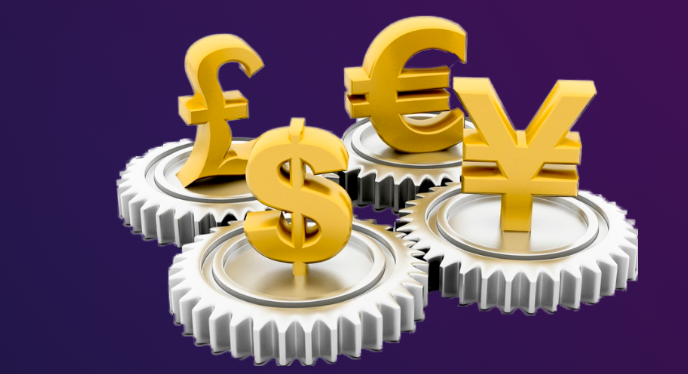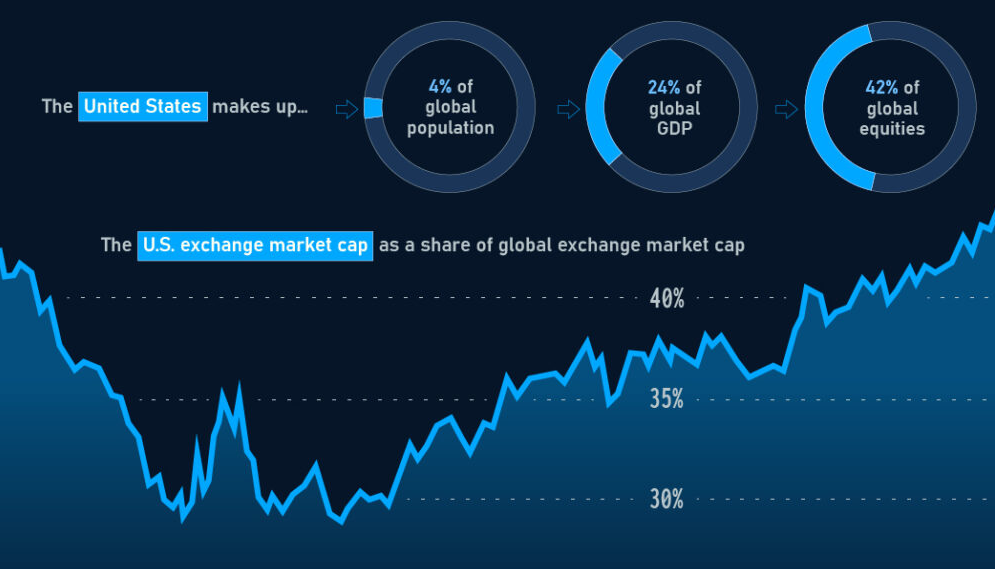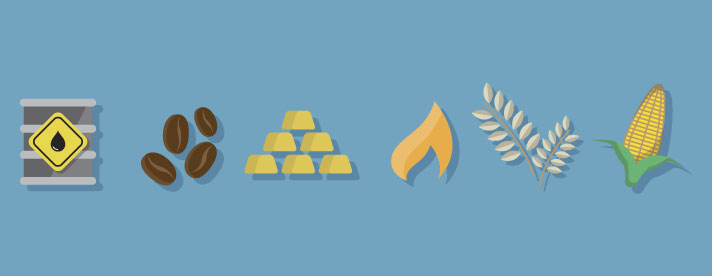A significant portion of the assistance from public states and policymakers came in the form of quantitative facilitation and lower loan costs once the pandemic started disrupting the advancement of products, administrations, and the larger economy.
Whatever the case, everyone is focused on the Fed and the inevitable increases in financing costs and tightening of bond-purchasing programs now that expansion is reaching a minimum amount and rising by 7% year over year – the most significant level in forty years.
As we enter a year with a strict money-related strategy and increasing loan costs, we are therefore looking into how the financial industry sectors should respond.
The Impact on Currency Pairs: Exchange Rates in Flux

Currency markets are often the first to respond to changes in monetary policy. As anticipation of interest rate hikes looms, major currency pairs have experienced proactive fluctuations. Moreover, the mere expectation of multiple rate increases in 2023 has driven up interest in the U.S. dollar.
Currency Pairs Reaction to Rising Interest Rates
| Currency Pair | Reaction | Rationale |
|---|---|---|
| EUR/USD | Decline in EUR value | Higher U.S. interest rates attract foreign investors, boosting demand for the dollar. |
| GBP/USD | Decline in GBP value | Similar to EUR/USD, the British pound weakens against the dollar. |
| USD/JPY | Increase in USD value | Higher interest rates make the dollar more attractive, strengthening it against the yen. |
| AUD/USD | Decline in AUD value | A higher U.S. dollar diminishes the appeal of the Australian dollar. |
| USD/CNY | Increase in USD value | Rising interest rates can lead to capital inflows into the U.S., increasing demand for the dollar. |
These reactions underscore the principle that higher interest rates tend to bolster the value of a currency, making it more enticing to foreign investors seeking higher yields. Interestingly, even amidst concerns about the Omicron variant and surging inflation, the U.S. dollar has maintained its dominance over other currencies. Analysts have also noted that the recent drop in Bitcoin’s value may be partly attributed to expectations of imminent interest rate hikes.
As the Federal Reserve formally announces its policy changes, opportunities for investment and speculation in the cryptocurrency market may emerge, creating a dynamic environment for traders and investors.
The Stock Market: Balancing Act Amidst Uncertainty

The stock market enjoyed a stellar performance in 2021, with U.S. indices consistently reaching record highs. However, the specter of an impending policy shift by the Federal Reserve casts a shadow over this euphoria.
The Impact of Rising Interest Rates on Stock Markets
| Aspect | Impact | Explanation |
|---|---|---|
| Stock Prices | Potential Decrease | Higher interest rates translate to higher borrowing costs for corporations, potentially reducing profitability and dampening stock prices. |
| Consumer Spending | Potential Decrease | Consumers with debt obligations may reduce their spending as debt becomes costlier, impacting businesses’ revenues and overall market performance. |
| Sector Variability | Varied Impact | Different industries may react differently to interest rate changes, making sector allocation and diversification vital for investors. |
| Earnings | Uncertainty | Earnings forecasts may be adjusted as companies navigate the new interest rate environment. |
From a macroeconomic perspective, higher interest rates generally exert a negative influence on stock prices. The logic is straightforward: as interest rates rise, borrowing becomes more expensive, leading to increased costs for companies. This can potentially erode profitability, leaving less capital available for investment in business expansion and innovation.
Moreover, higher interest rates can affect individual consumers, particularly those with debt obligations. As loan repayments become more costly, consumers may tighten their belts, reducing spending and impacting the revenues of businesses across the board. This ripple effect has the potential to create a challenging environment for companies seeking growth.
However, it’s essential to note that the stock market is not monolithic. Different sectors and industries may respond differently to interest rate changes. For instance, defensive sectors like utilities and healthcare often perform better during periods of rising interest rates due to their stable cash flows and dividend yields. Contrastingly, cyclical sectors like technology and consumer discretionary may face more considerable challenges.
While the market is expected to remain relatively stable if interest rate hikes are gradual and predictable, these unprecedented times remind us that forecasting market reactions is inherently uncertain.
Commodities: The Dance of Gold and Oil

Commodities form another asset class intricately tied to the performance of the U.S. dollar. Among these, gold is often considered a safe-haven asset and is particularly sensitive to interest rate movements.
The Influence of Rising Interest Rates on Commodities
| Commodity | Reaction | Explanation |
|---|---|---|
| Gold | Potential Decrease | Historically, gold prices have declined in response to rising interest rates, as the opportunity cost of holding non-yielding assets like gold increases. |
| Oil | Price Fluctuations | The relationship between oil prices and the U.S. dollar can lead to changes in oil prices due to interest rate hikes, impacting both producers and consumers. |
Historically, gold and interest rates have had an inverse relationship. As interest rates climb, the opportunity cost of holding gold increases because it doesn’t offer interest or dividends. Consequently, investors may move their funds to interest-bearing assets, putting downward pressure on gold prices. Recent data from the first week of the year has confirmed this pattern, with gold prices sliding in response to expectations of impending rate hikes.
Despite this bearish outlook for gold, some investors view price dips as buying opportunities, given gold’s historical role as a hedge against economic uncertainty and inflation.
Conversely, the relationship between rising interest rates and oil prices is more complex. Oil, a globally traded commodity, is priced in U.S. dollars. When the dollar strengthens due to higher interest rates, it becomes more expensive for other countries to purchase oil, potentially leading to a decrease in demand. This dynamic can affect both oil-producing nations and consumers around the world.
For emerging economies that rely heavily on oil exports, the rising cost of servicing dollar-denominated debt can strain their budgets. Consequently, these nations may need to reduce their oil spending, possibly leading to a glut in global oil supply and downward pressure on prices.

In summary, the announcement of interest rate hikes has already begun to influence global financial markets. While the U.S. dollar stands to benefit from higher exchange rates, other assets may experience shifts in demand and value. The stock market has witnessed increased volatility, commodities like gold have seen price declines, and the oil market faces potential disruptions in supply and demand dynamics. As we navigate these uncertain times, it’s essential for investors to stay informed and be prepared for a range of potential outcomes.
Frequently Asked Questions
To provide a more comprehensive understanding of the impact of rising interest rates on financial markets, let’s address some frequently asked questions:
1. How do central banks determine interest rates?
- Central banks, such as the Federal Reserve in the United States, use a variety of tools and indicators to set interest rates. These may include economic data (like inflation and unemployment rates), monetary policy meetings, and market conditions. The goal is to achieve price stability and support economic growth.
2. What are the potential benefits of rising interest rates?
- Rising interest rates can help combat inflation, as they make borrowing more expensive and encourage saving. They can also provide higher returns on savings accounts and fixed-income investments.
3. How can investors protect their portfolios during periods of rising interest rates?
- Diversification is key. Investors can allocate their portfolios across various asset classes, including stocks, bonds, and alternative investments, to mitigate risks associated with rising interest rates.
4. What impact can rising interest rates have on mortgage rates?
- Mortgage rates often follow the trend of rising interest rates. When central banks increase their policy rates, mortgage lenders may raise interest rates on new loans, potentially making homeownership more expensive.
5. Are there any opportunities for investors during periods of rising interest rates?
- Yes, there can be opportunities. For example, some sectors, like financials, may benefit from higher interest rates, as they can earn more on their investments. Additionally, investors may find value in certain dividend-paying stocks and bonds.
Finally
The implications of rising interest rates on global financial markets are multifaceted. While they can impact currency values, stock prices, and commodities, the exact outcomes depend on a variety of factors, including the pace and magnitude of rate increases.
Investors should remain vigilant, diversified, and well-informed to navigate these shifting tides successfully.











